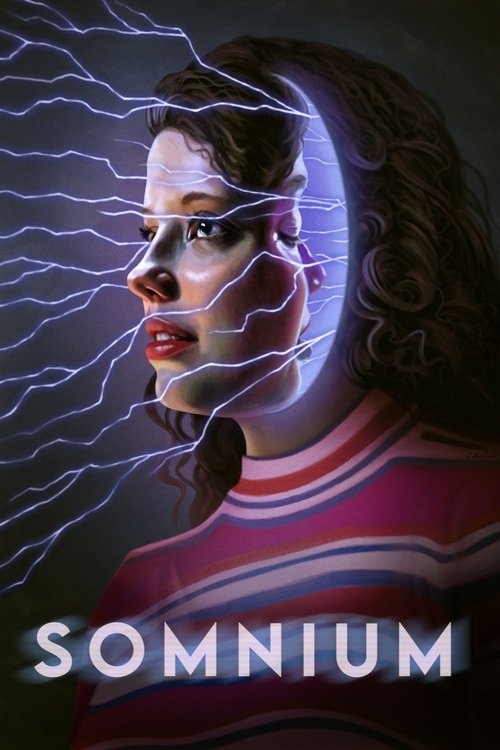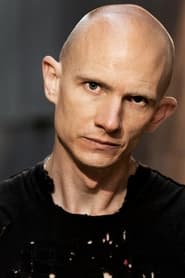
Ask Your Own Question
What is the plot?
Sorry, we haven't had the time to watch this and are working on a plot for this title. Check back in a few days.
What is the ending?
The ending of Somnium (2025) shows Gemma confronting the dark mysteries of the sleep clinic where she works, ultimately facing her own insecurities and the blurred line between dreams and reality. The film closes with Gemma gaining a deeper understanding of herself and the clinic's dangerous influence, leaving her fate ambiguous but suggesting a tentative step toward self-acceptance and empowerment.
In the final sequence of Somnium, the narrative unfolds with Gemma, the aspiring actor who has been working the night shift at the Somnium sleep clinic, fully immersed in the clinic's surreal and unsettling environment. The scene opens with Gemma monitoring the patients in their sleep chambers, where the clinic's experimental technology manipulates dreams to manifest desired realities. As the night progresses, Gemma notices the haunting figure she has seen before on security cameras and in the hallways, a spectral presence that symbolizes the clinic's dark undercurrents.
Gemma's internal struggle becomes externalized as she experiences increasingly vivid hallucinations or dream-like episodes, blurring the boundary between her waking life and the dream states induced by the clinic's technology. These visions force her to confront her deepest fears and insecurities, particularly her self-doubt about her acting career and her sense of isolation after moving from Georgia to Los Angeles.
The climax occurs when Gemma discovers the true extent of the clinic's manipulations: the technology is not only shaping dreams but also controlling minds and implanting ideas, raising ethical and existential questions about free will and identity. She confronts the enigmatic director of the clinic, who embodies the seductive but dangerous promise of manufactured success. This confrontation is tense and charged, with Gemma challenging the director's vision and the cost of sacrificing one's soul for dreams.
As the film moves toward its resolution, Gemma makes a decisive choice to reject the clinic's manipulative power. She attempts to break free from the cycle of control and illusion, symbolized by her physically leaving the clinic's premises. However, the ending remains deliberately ambiguous: while Gemma steps out into the daylight, suggesting a new beginning, the lingering presence of the haunting figure and the unresolved mysteries of the clinic imply that the struggle with her inner demons and the external forces of control may continue.
Regarding the fates of the main characters at the end:
- Gemma: She survives the ordeal and leaves the clinic, symbolizing a tentative reclaiming of her agency and self-confidence, though her future remains uncertain.
- The Clinic Director: Remains a shadowy figure, representing the ongoing threat of manipulation and control through technology.
- Other Patients: Their fates are left mostly unexplored in the final scenes, emphasizing the personal nature of Gemma's journey.
The ending scene-by-scene:
- Monitoring the Clinic: Gemma watches over the patients, the camera focusing on the eerie sleep chambers and the flickering security monitors. The haunting figure appears again, heightening tension.
- Hallucinations and Dream States: Gemma experiences disorienting visions that merge her past in Georgia with her present fears, showing flashbacks and emotional turmoil.
- Confrontation with the Director: In a dimly lit office, Gemma confronts the clinic's director, who defends the technology's promise while Gemma challenges its ethical cost.
- Escape Attempt: Gemma physically leaves the clinic, walking into the bright outside world, symbolizing hope and a break from manipulation.
- Ambiguous Closure: The haunting figure's presence lingers in the background, and the final shot leaves open whether Gemma's liberation is complete or if the dream-reality conflict persists.
This ending highlights the film's core themes of self-doubt, the cost of chasing dreams, and the dangers of surrendering control to external forces, all embodied in Gemma's personal and psychological journey.
Is there a post-credit scene?
The movie Somnium (2025) does not have a post-credits scene. There is no indication or mention in reviews or movie databases that any extra scene appears after the credits in this film. The available information focuses on the film's plot and themes but does not reference any post-credits content.
What is the significance of the haunting figure Gemma sees on the security cameras and in the darkened halls of the Somnium clinic?
The haunting figure that Gemma spots on the security cameras and in the darkened halls is a mysterious presence tied to the dark secrets of the Somnium sleep clinic. This figure symbolizes the eerie and possibly supernatural or psychological dangers lurking within the clinic, reflecting the blurred lines between dreams and reality that Gemma experiences as she becomes more entangled in the clinic's mysteries.
How does Gemma's personal struggle with self-doubt and her acting career relate to the events at the Somnium clinic?
Gemma's struggle with self-doubt and her pursuit of an acting career are deeply intertwined with the events at the Somnium clinic. The clinic's experimental dream technology and the surreal experiences Gemma undergo mirror her internal battle with insecurity and her need to believe in herself to achieve her dreams. The film uses the clinic's dream experiments as a metaphor for Gemma's psychological journey toward self-confidence and overcoming her fears.
What role does the sleep clinic's 'manifest doctrine' technology play in the plot and how is it portrayed?
The 'manifest doctrine' technology at the Somnium clinic is a subliminal dream-influencing system designed to implant desired ideas or outcomes into clients' minds by feeding them manufactured dreams during sleep. This technology is central to the plot, as it raises ethical and psychological questions about mind control and manipulation. The clinic's lax protections make abuse of this technology inevitable, contributing to the film's tension and horror elements.
Who are the key figures running the Somnium clinic, and how do they influence Gemma's experience?
The Somnium clinic is run by an enigmatic director and a small team of researchers who oversee the experimental dream studies. Their control over the dream technology and the clinic's operations directly impact Gemma's experience, as she works the night shift monitoring the patients. Their mysterious motives and the clinic's secretive nature add layers of suspense and uncertainty to Gemma's journey, influencing her perception of reality and the unfolding horror.
What is the significance of the flashbacks to Gemma's life in Georgia, and how do they affect the story?
The flashbacks to Gemma's life in Georgia provide important context for her emotional state and motivations. They reveal her past social connections and the pain of a recent breakup, which contribute to her feelings of isolation and vulnerability in Los Angeles. These flashbacks are more fleshed out than many of the Hollywood supporting characters, emphasizing Gemma's internal struggles and grounding the sci-fi horror elements in her personal history.
Is this family friendly?
The movie Somnium (2025) is not family friendly and is generally unsuitable for children or sensitive viewers due to its psychological horror and intense themes. It contains potentially upsetting elements such as:
- Psychological horror and paranoia that create an unsettling atmosphere.
- Hallucinations, confusion, and sleep paralysis depicted in the story, which may be disturbing.
- Themes of trauma, grief, and detachment from reality that are explored in a slow-burning, cryptic manner.
- Some horror elements including shadows, creaking sounds, and implied presence of a creature, though not overtly graphic.
- The film's tone is often intense, with frightening and intense scenes that may cause discomfort.
- There is no detailed information on explicit violence, gore, or nudity, but the psychological intensity and horror aspects are significant enough to caution sensitive viewers.
Overall, Somnium is a psychological drama with horror elements that deals with complex and mature themes, making it inappropriate for children and potentially upsetting for sensitive audiences.































